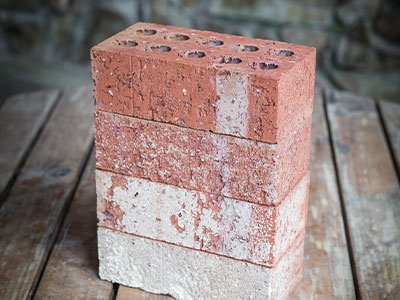
If you’re building a new home or renovating an old one, you’re probably wondering, about the best brick for construction purposes. The best answer depends on your needs and budget. Sand lime bricks, for example, are lighter than cement bricks, but have higher fire resistance and are a great choice for acoustic insulation. Fly ash bricks, on the other hand, are made from coal-fired power plants and can be toxic. They contain aluminum powder, quicklime, and gypsum. In addition, they have a more uniform shape than other bricks.
Fly ash bricks are a great alternative to burnt clay bricks
Fly ash bricks are an excellent alternative to burnt clay bricks in construction projects. They offer excellent compressive strength and are resistant to water absorption. However, their durability is reduced as the brick size increases. For this reason, fly ash bricks are usually produced in smaller sizes. They are made from the waste by-products of coal-fired power plants.
Fly ash bricks are far more affordable than red bricks and are considered an environmentally-friendly option for many construction projects. They are also a more sustainable choice due to their low density, allowable water absorption, and compressive strength. Unlike traditional red bricks, they don’t contain any harmful chemicals and are also easier to transport.
Concrete bricks are a solid choice of brick for construction
While there are a number of alternatives to brick in construction, concrete bricks offer a number of advantages. For one, they’re more durable than clay bricks. They have the strength and density to resist tensile forces and are often used in construction projects where water resistance is important.
Another benefit to concrete bricks is their low cost. They can be produced at a much lower cost than traditional bricks. Bricks can be quite heavy, though, and the weight depends on the type of construction. For example, a standard clay brick can weigh five pounds, while an eight-inch concrete block may weigh 43 pounds. Thankfully, there are lightweight concrete blocks on the market. These bricks have a high level of compression strength, yet are still lighter than most bricks.
Red bricks are an excellent option for construction, but they have a high carbon footprint. The process of making them requires the excavation of topsoil and increases carbon dioxide emissions. By contrast, solid concrete blocks are more environmentally friendly and require less plastering and mortar.
Red bricks are heavier than cement bricks
Cement bricks are less expensive than red clay bricks, but they also have a higher carbon footprint than red bricks. Making red bricks also consumes more cement mortar mix and takes longer to dry, thereby adding to their overall cost. However, red bricks are more appealing aesthetically, which is why many people choose to use them in their constructions.
Red bricks are also more durable than cement blocks. They require less maintenance when properly installed and are less prone to breaking or bending during transport. They can also be used in building board dividers, chimneys, smokestacks, and other structures.
Fly ash bricks reduce carbon footprint
Fly ash bricks are an eco-friendly option for construction projects. They can be used in power plants, factories, warehouses, homes, and high-rise buildings. In addition to the environmental benefits, they also provide an affordable way to construct buildings. The manufacturing process is environmentally friendly and uses less energy. Additionally, they are less likely to absorb water and emit pollutants than standard bricks. This reduces the construction industry’s carbon footprint and the stress placed on virgin resources.
The manufacturing of traditional bricks using clay, sand, and soil requires extremely high temperatures. The carbon dioxide produced during this process contributes to global warming. However, the new manufacturing method replaces the soil ingredient with fly ash. This method also reduces soil, water, and air pollution. This has many benefits, not the least of which is improved human health. Using fly ash bricks reduces respiratory ailments near power plants and reduces the carbon footprint of construction projects.
Sand lime bricks have a good aesthetic appeal
Sand lime bricks are a good choice for construction. This type of brick has a very good aesthetic appeal and does not need finishing. They are made from lime and sand, which gives them great strength. The bricks are also uniformly shaped and do not require plastering. These bricks have excellent fire resistance.
Sand lime bricks have interesting colors and textures. They have a light, grey hue and can be used in construction. Sand lime bricks are made from high-pressure-setting sand and lime. The mixture causes the bricks to expand and contract. This may cause cracking in the structure. Additionally, the bricks do not have great abrasion resistance, so they are not the best choice for paving.
The bricks in this class are similar to those in the first class but are not as smooth and have sharp edges. They are used for temporary structures and are not recommended for permanent construction.
